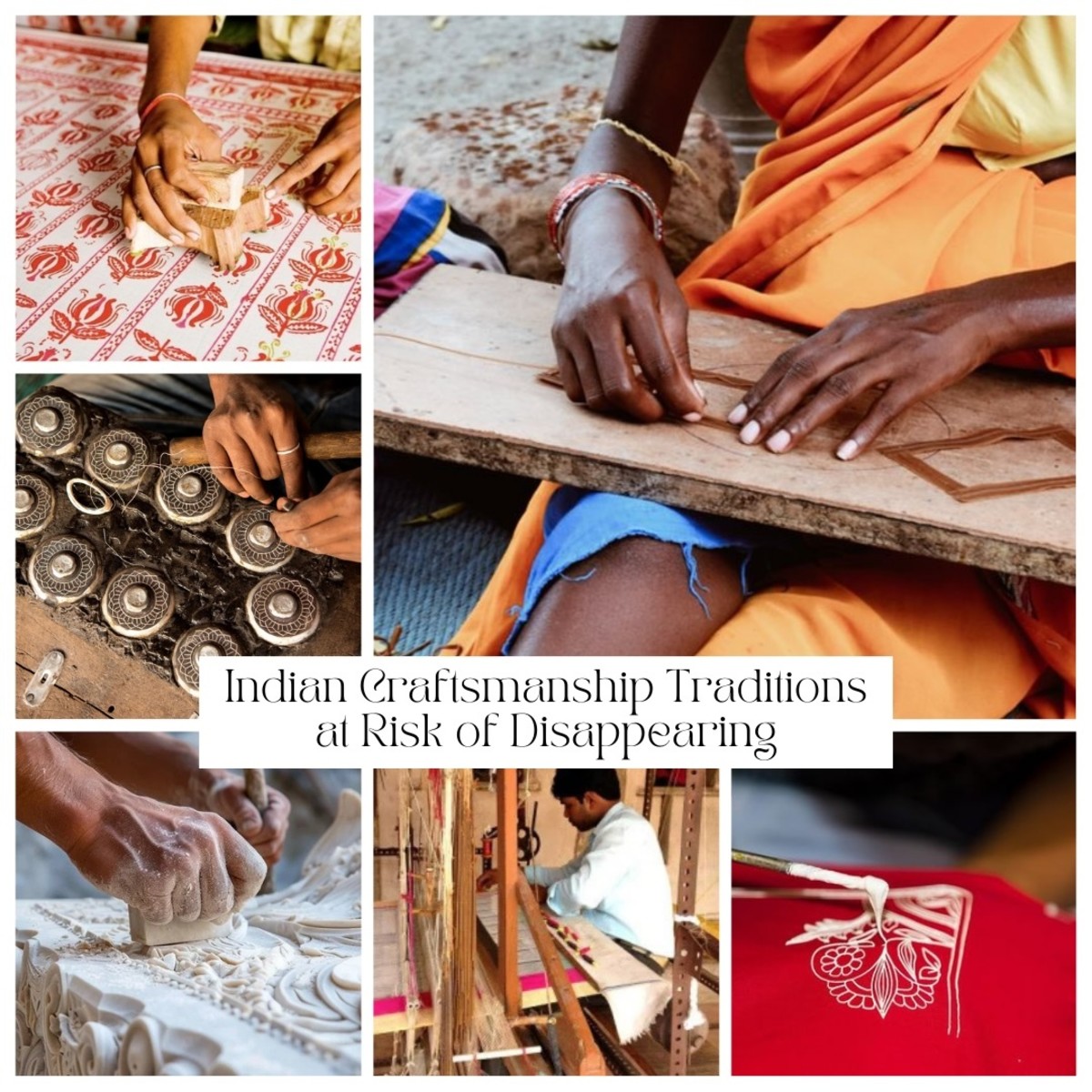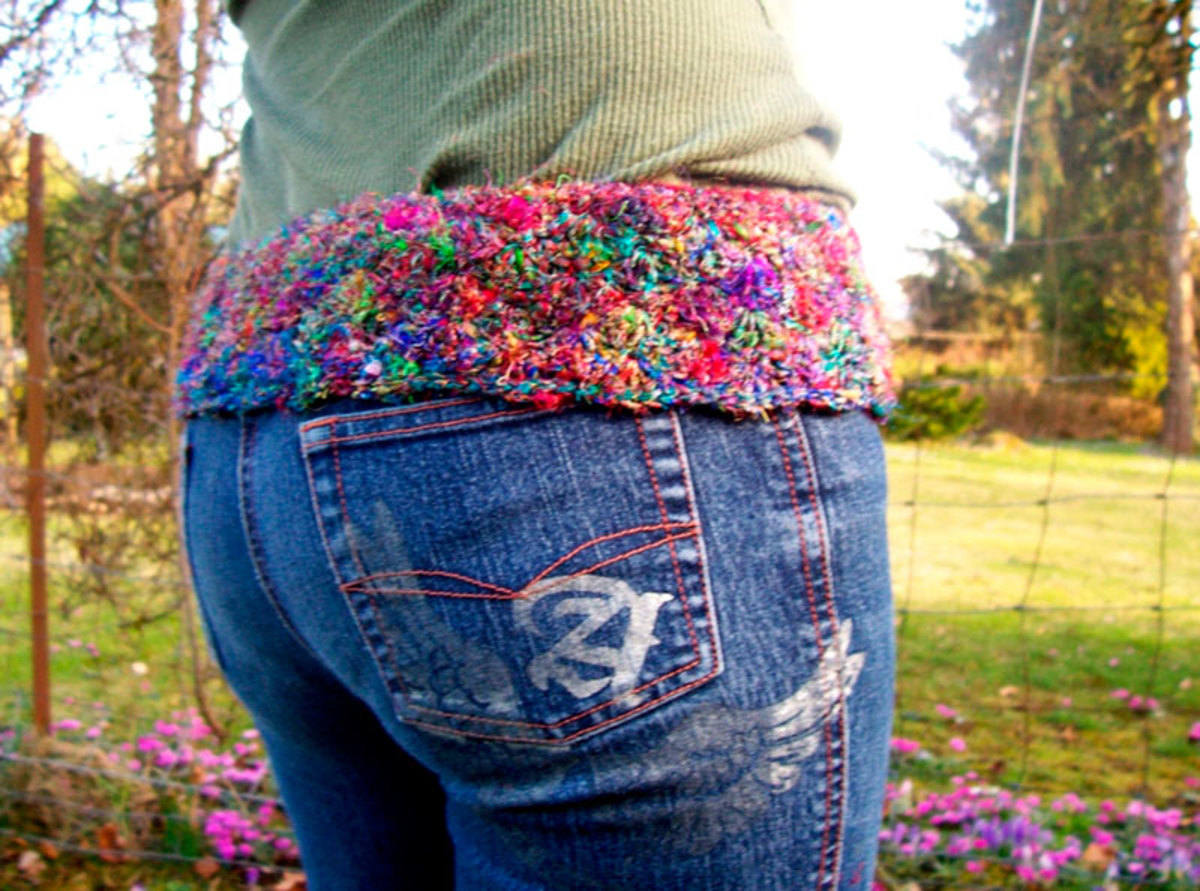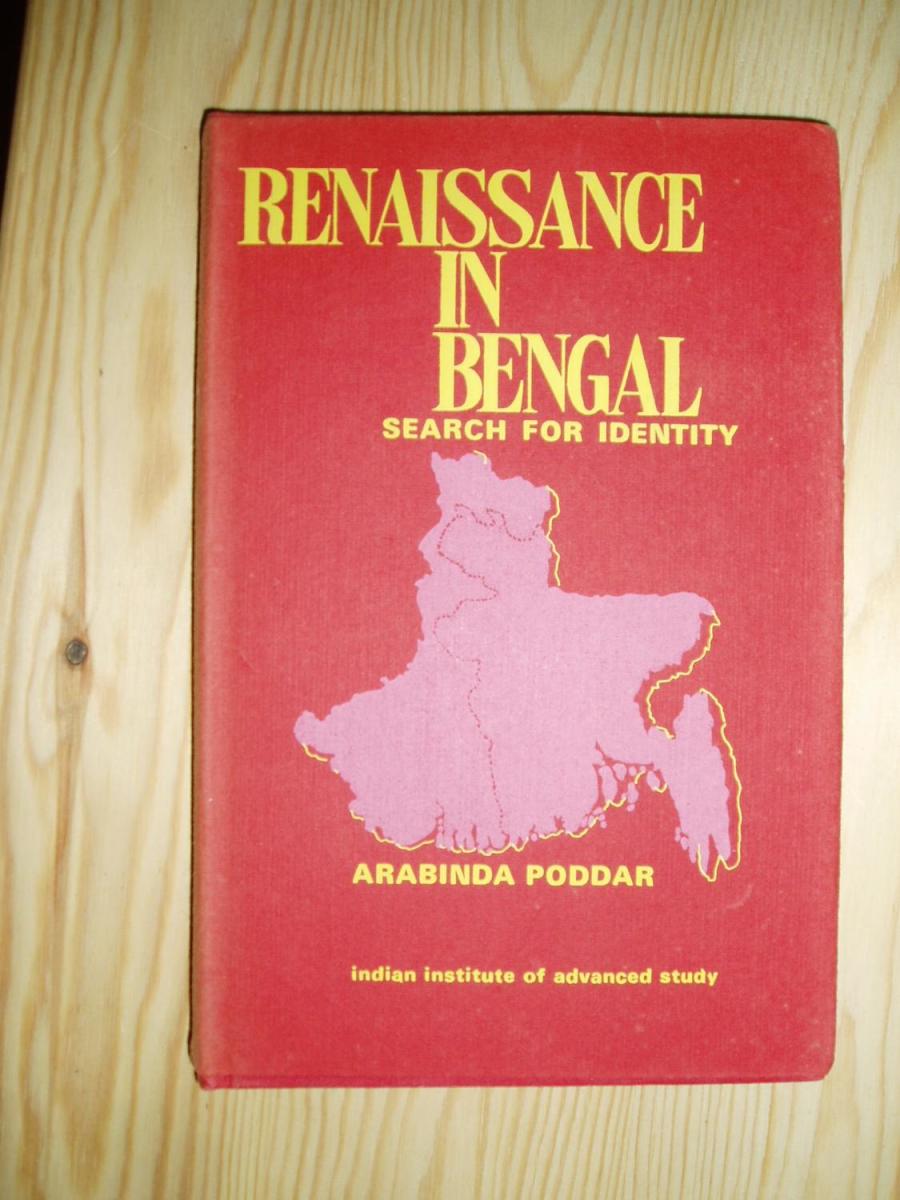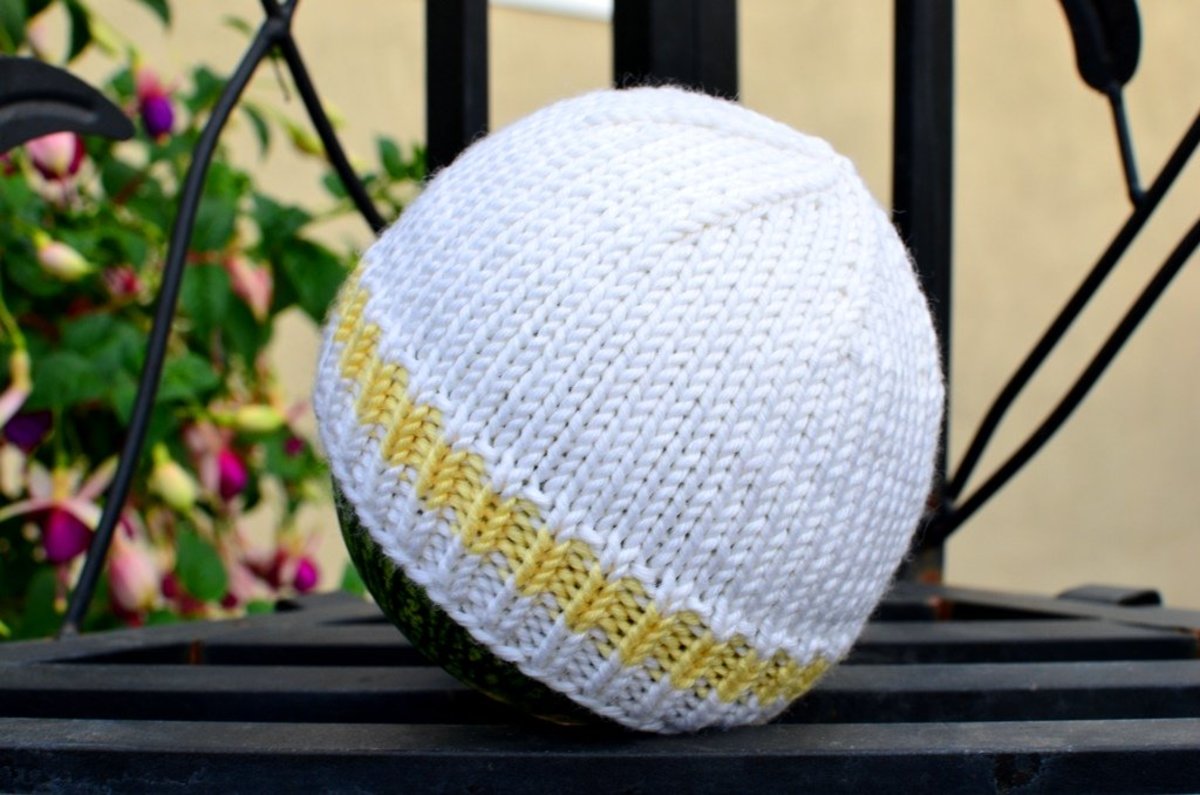- HubPages»
- Arts and Design»
- Crafts & Handiwork»
- Textiles
Indian Saris (Sarees)
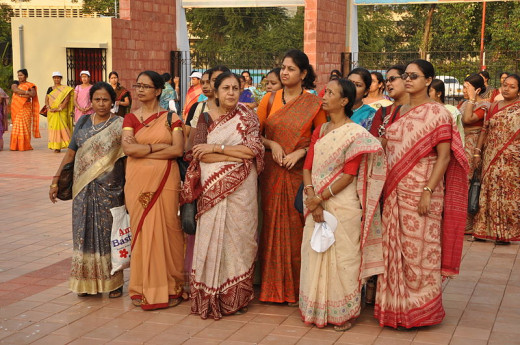
Introduction
Indian costumes have not remained untouched with changing fashions. The changes in color, fabric, pattern and design are being admired. The people have adopted the western style with traditional clothes.
But the evergreen style dress of women which has not changed so far is the Indian Sari. This symbol of Indian tradition is still the first choice of women. From celebrities to common masses, the passion for sari could be seen everywhere and is omnipresent in India. The credit for giving prominence and maintaining the importance of sari goes to Indian cinema and television. The statistics prove that the share of the sari is more than 50% in women costumes in the market.
Out of thousands of different types of saris, both the original and the fake saris are available in the market. The duplicate patterns of saris are there in the market, if re Kanjivaram and Banarsi saris are beyond the reach of the customer. These duplicate saris are within the reach of every buyer and are similar to the original ones, which are rather very costly. It is the choice of the customer to buy either of the two.
The Pochampalli or Kanjivaram saris from South India; Baluchari, Taant and Kantha saris from Bengal; Banarasi sari from Banaras or Varansi; Laharia sari from Rajasthan, Tasar silk sari from Madhya Pradesh are the some of the different types of saris popular in India. These saris have their own grace and identity.
Thousands of varieties of saris are available in the market but the Kanjivaram and Banarsi saris are peerless.
As far as rhe embroidery and art is concerned, the mirror work of Gujarat, the phulkari of Punjab, the kantha embroidery of Bengal, the Madhubani painting of Bihar and the Chickenkari saris of Lucknow are unique and matchless.
With the passage of time, several changes have come in saris, but the Banarsi sari, Kanjivaram sari and the sari of Surat allure the Indian women due to special importance status and gracefulness attached to them.
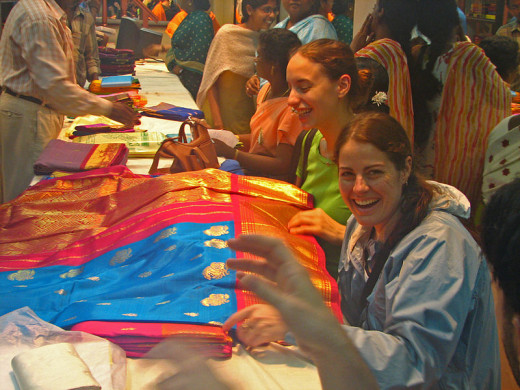
The Kanjivaram Sari with Golden Border
The Kanjivaram or Kanchipuram saris are made in Kanchipuram village of Tamilnadu in south India. These silk saris are considered the best saris made in India. The villagers still use traditional methods to make these saris. The Zari or the thread used in Kanjivaram is made of silk the inside of which lies the covering of silver wires, white the outer covering has gold on it.
The duplicate Kanjivaram saris available in the market use fake zari in which the red thread appears on little scratching. These have little zari in them and the silk used is of 2 plies instead of 3 ply silk. That is why they are cheaper. Their price ranges from 3 thousand to 25 thousand Indian rupees.
On the other hand, the pure Kanjivaram saris the weaving is done with pure gold thread. Even half of the saris out of the total number saris sold the world over in the name of Kanjivaram sari are not manufactured here. Therefore the markets are full of fake or duplicate Kanjivaram saris.
The original Kanjivaram saris are heavy and their helm is the heavier. Their price range begins from 10 thousand rupees and goes up with pattern and design.
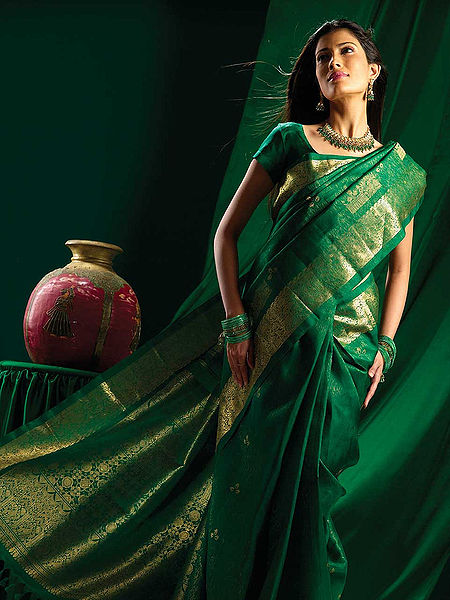
The Baluchari Sari of Bengal
These saris are manufactured in Vishnupur and Murshidabad in West Bengal. These saris are famous not only in India but also in the entire world. These saris come both in silk and cotton. In 1965, the production of Baluchari saris began in Benaras too.
The specialty of these saris is that the mythological tales are embroidered on them. The most common tales are from Mahabharata and Ramayana including other legendary scenes like narghile or Hookah smoking women, horse rider, courtroom scene etc.
Instead of deep colors, theBaluchari sari contains the basic colors like red, green, blue and yellow to weave different patterns. The border of these saris is theme based or it contains a story. The handmade Baluchari sari could be identified with the pattern of weaving as the computerized saris have a minute and flat weaving. The price of original Baluchari sari begins from 3 thousand rupees.
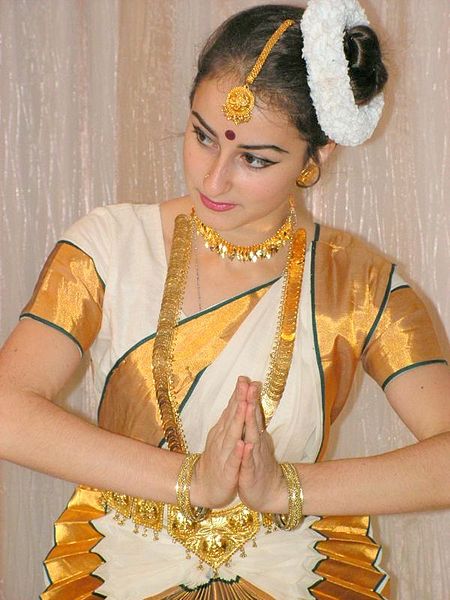
The Bridal Banarsi Sari
The main production center of Banarsi sari is Varanasi in Uttar Pradesh. It is believed that this style arrived in India with the advent of Mughals. This art of embroidery was used in Shervani or overcoat, bedsheets, dupatta or head coverings, masand etc. Since the use of sari was very common so this art genre was adopted in saris. At that time silk and zari or gold and silver threads were used. Earlier pure gold was used in these saris, but now fake shining zari is used due to the increasing prices of gold.
The embroidered threads should not scatter on the plate’s part and helm portion of the real Banarsi sari, rather they should be tightly tied to the fabric. Besides, the helm which remains hanging on the shoulder should have an eight-inch patch.
The price of Banarsi sari begins from 3 thousand rupees and goes upward as the quality and the embroidery work increases. The fake or duplicate Benarsi saris are available in the market due to their increasing demands and it is very difficult to distinguish between the two.
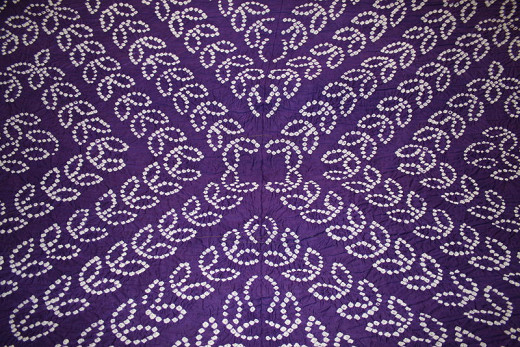
Bandhani or Bandhage Sari of Rajasthan
The Bandhani saris are very popular in Rajasthan. These saris come in striking colors and patterns. They are made by the tie and die methods. The price of Bandhani sari increases with the increase in colors. This sari could be recognized when it is opened and spread to display its bandhages or bonds. The wrapped cloth is opened and given the shape of the sari. The starch is given to the sari and it is polished, as and when the customer selects a particular piece. The price of real Bandhani sari begins from 15 thousand rupees and it goes on increasing as the minute work executed on it increases.
The Sambhalpuri Sari
The traditional handwoven sari of Sambalpur from Orissa is locally called shadhi. The warp and weft of Sambhalpuri sari are also tied and dyed like Bandhani Sari of Rajasthan. But unlike the latter, the Sambhalpuri sari is dyed before weaving.
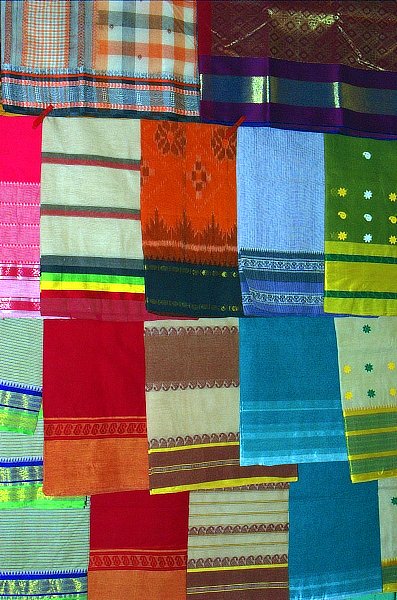
Taant Sari from Bengal
The Tant or Taant sari is very elegant sober sari. It is most suitable in summer season due to its light weight. Originally the base of Taant sari used to be in the light shade, but now the weavers are experimenting with new shades and colors. Therefore the Taant saris are available in dark shades too.
These saris commonly use the geometric designs and patterns which are woven with a very fine thread of beat thread. The price of Taant sari increases with the work on border and helm or pallu. The simple Taant sari is available from mere one thousand rupees. This cheap sari is worn by the women on daily on every occasion.
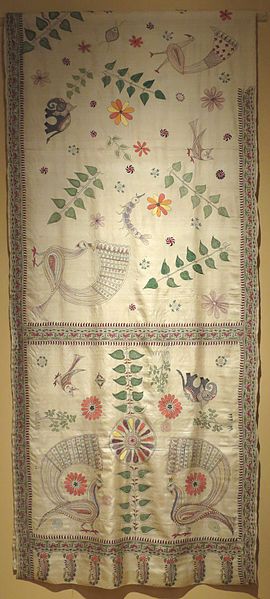
Kantha Sari from Bengal
This sari became popular due to Kantha embroidery. The embroidery work on Kantha sari is generally done by the rural women of Bengal. The Kantha is a type of embroidery having a running stitch. These are handmade saris. But it may take a year or so to make a single sari at home.
The themes from mythological stories of India and the characters of traditional folklore are woven on these saris in a running stitch of Kantha. The price of Kantha sari increases with the amount of fine work done on them.The light basic Kantha sari is available for from 3 thousand rupees onward.
Chanderi Sari of Madhya Pradesh
The Chanderi sari is also known for the hand work done on them. These saris are light and are very suitable for summer season. The cotton or silk woven Chanderi saris are available in the market. But again there are a lot of factories imitative or duplicate products which are very cheap.
The weaving of original Chanderi Sari is easily discernible as it is thick and its designs are not computer made. Generally, these saris are plain and have a golden border with the floral designs of leafy patterns made on the entire surface. The mythological themes on Chanderi sari are possible to be woven by hands only and are not available in factory products. Therefore it is necessary to pay close attention to the weaving pattern before buying it.

Painthini Sari of Maharashtra
The use of this beautiful and highly popular sari has now become obsolete. It had the original and pure zari work of gold on it. This sari was very costly as the methods of its manufacture were very long and difficult. Along with the rest of the sari, its golden or silver borders are hand woven. It had a unique method of its making.
First, the borders and the remaining sari are woven separately and then the two are joined together to make a whole sari. It contained geometric designs and the cheapest one is available from 40 thousand rupees only. But now this sari is not in use and is rarely manufactured.
![Traditional Indian Saree [Traditional dress] Traditional Indian Saree [Traditional dress]](https://usercontent1.hubstatic.com/12177882.jpg)
The Difference between the real and Fake Sari
The duplicate specimen of each and every type of sari is available in the market. Both the real and the fake are alike and the difference is discernible on minute observation only.
The risk of buying a fake sari after paying the huge price is always there and extra care is needed before purchasing a sari of your choice.
The real Bandhani Sari has fine granules which lie close to each other.
The real Bengali Taant sari is very light, transparent and organdy based. Its cotton fabric is thick and generally contains the geometric designs.
The hand made Kaantha saris are very costly and its fake computerized versions are also available in the market. The Kantha work executed by hand is thick and clean. It could be recognized by its woven threads.
It is difficult to identify the real Chanderi sari because there is a little difference between the handmade and factory-made products. The real Chanderi has thick work and is heavy in weight, while the power loom version has minute work executed on them. The zari work is possible by hands only.
It is very difficult to make the duplicate version of the Painthini sari of Maharashtra as they are very costly and contain the real zari work. the border and helm or palla have similar color, while the rest of the sari comes in different shades. This sari could be recognized by its zari work.
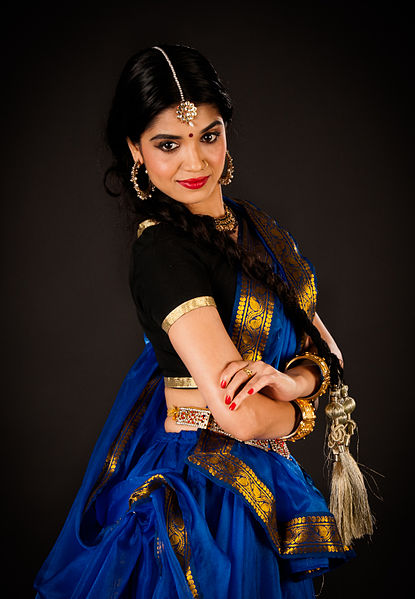
© 2015 Sanjay Sharma


